
René-Robert Cavelier, Sieur de La Salle was a 17th century French explorer and fur trader in North America. He explored the Great Lakes region of the United States and Canada, the Mississippi River, and the Gulf of Mexico. He is best known for an early 1682 expedition in which he canoed the lower Mississippi River from the mouth of the Illinois River to the Gulf of Mexico and claimed the entire Mississippi River basin for France.
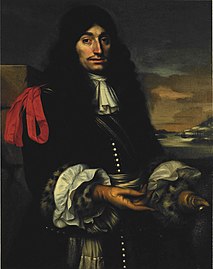
Henri de Tonti was an Italian soldier, explorer, and fur trader in the service of France.

John Jones Ross, was born in Quebec City, Canada. He was the son of a Scots-Quebecer merchant, George McIntosh Ross, and his French-Canadian wife Sophie-Éloïse Gouin.
Pierre Alphonse de Tonty, or Alphonse de Tonty, Baron de Paludy was an officer who served under the French explorer Cadillac and helped establish the first European settlement at Detroit, Michigan, Fort Pontchartrain du Detroit on the Detroit River in 1701. Several months later, both Cadillac and Tonty brought their wives to the fort, making them the first European women to travel so deep into the new territory.

François-Xavier Lemieux was a French Canadian lawyer and politician.
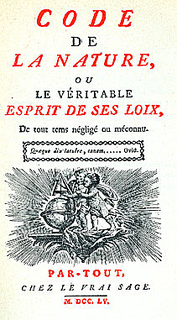
Étienne-Gabriel Morelly was a French utopian thinker and novelist. An otherwise "obscure tax official", Morelly wrote two books on education and a critique of Montesquieu. As well he is thought to be the author of The Code of Nature, which was published anonymously in France in 1755. This book, a basis of thought for later socialist and Communist thinkers, criticized the society of his day, promoted a social order without avarice and proposed a constitution intended to lead to an egalitarian society without property, marriage, church or police.
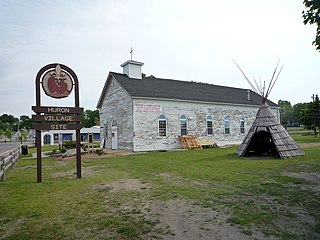
Fort de Buade was a French fort in the present U.S. state of Michigan's Upper Peninsula across the Straits of Mackinac from the northern tip of lower Michigan's "mitten". It was garrisoned between 1683 and 1701. The city of St. Ignace developed at the site, which also had the historic St. Ignace Mission founded by Jesuits. The fort was named after New France's governor at the time, Louis de Buade de Frontenac.

Route 281 is a 75 km two-lane north/south highway in the Chaudière-Appalaches region in the province of Quebec, Canada. Its northern terminus is in St-Michel at the junction of Route 132 and its southern terminus is close to Saint-Camille-de-Lellis at the junction of Route 204.
Fort St. Joseph was a fort established in 1686 by Daniel Greysolon, Sieur du Lhut for New France. Erected on the St. Clair River, the fort was intended to prevent English trade with native tribes. In 1687, about two hundred coureurs de bois, five hundred Algonquian, Henri de Tonti, Nicholas Perrot, Oliver Morel de La Durantaye, and thirty French soldiers gathered there under Marquis de Denonville's orders to prepare for an attack on the Six Nations Iroquois Confederacy during the Iroquois Wars.
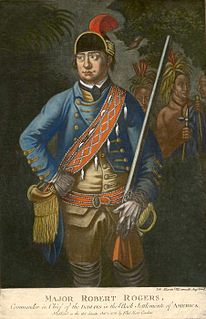
The 1758 Battle on Snowshoes occurred on March 13, 1758, during the French and Indian War. It was fought by members of British Ranger companies led by Robert Rogers against French troops and Indians allied to France. The battle took place near Lake George, now in northern New York, but then in the frontier area between the British province of New York and the French province of Canada. The battle was given its name because the British combatants were wearing snowshoes.

Fort Chécagou, or Fort Chicago, was a purported seventeenth-century fort that may have been located in what is now northeastern Illinois. The name has become associated with a myth that the French continuously maintained a military garrison at a fort near the mouth of the Chicago River, and the future site of the city of Chicago on the southwestern shore of Lake Michigan. Some sources mention that the fort was built in 1685, and that Henri de Tonti sent his aide, Pierre-Charles de Liette, as commander of the fort through 1702. Although this fort was marked on a number of eighteenth century maps of the area, there is no evidence that it ever existed at the described location, but may have instead actually been located at the mouth of the St. Joseph River, on the southeastern shore of Lake Michigan.

Terre-de-Haut Island is the most easterly island in the Îles des Saintes archipelago of Guadeloupe.
Louis-Henri de Baugy, Chevalier de Baugy was from a noble family of France and came to New France as a member of the party of Joseph-Antoine de La Barre, who was replacing Buade de Frontenac as Governor General.
Jacques Baudry de Lamarche was the son of a Canadian craftsman from Trois-Rivières who moved to France at some point in his youth.

Pierre Morel is a French film director and cinematographer. His work includes District 13, From Paris with Love, and Taken.
Morel is a French surname.
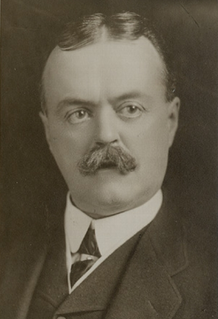
Édouard Burroughs Garneau was a Canadian politician.

Events from the year 1727 in Canada.
Louis de La Porte de Louvigny was a military officer in France and Canada, who fought during the French and Indian wars.















